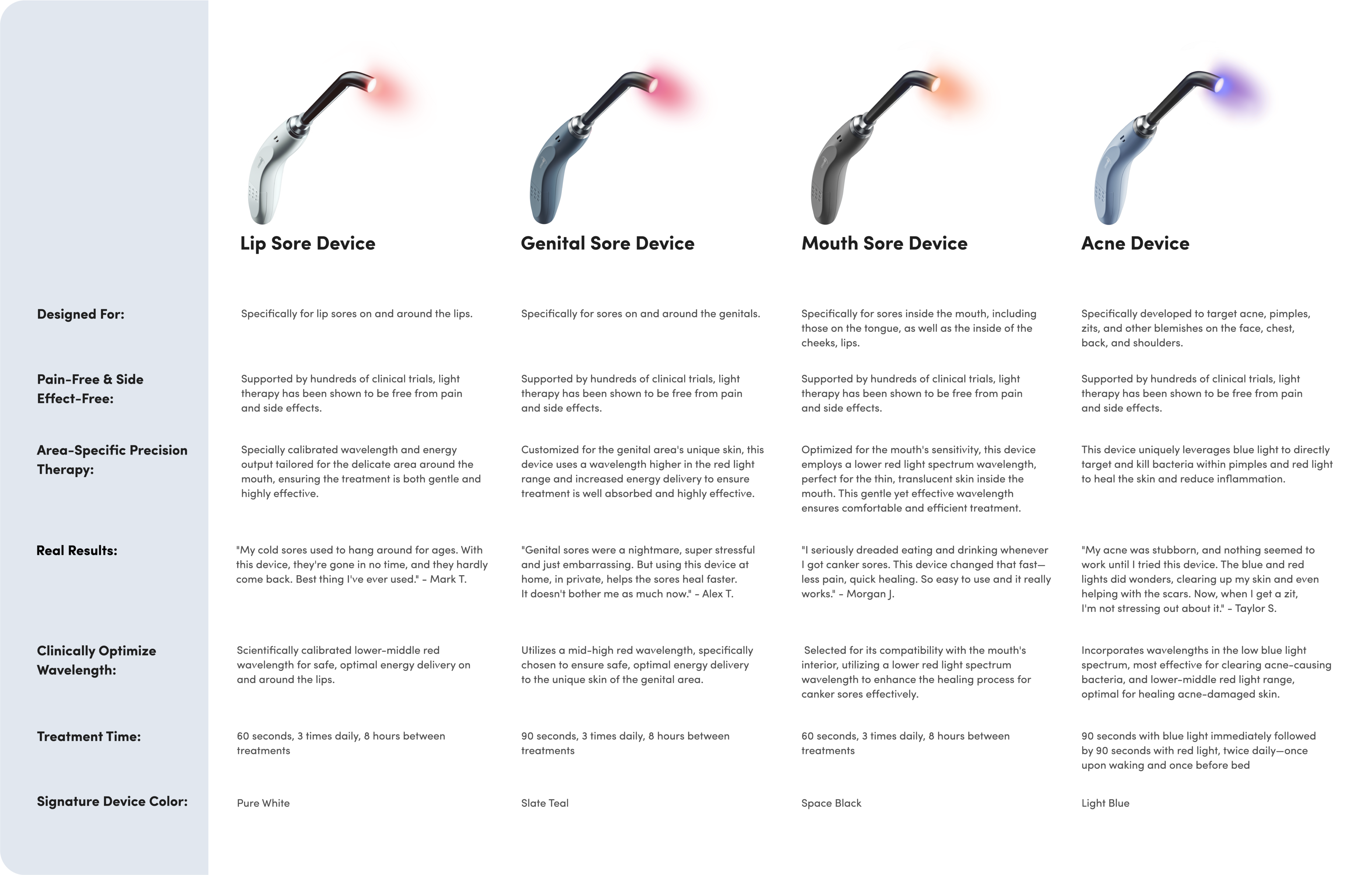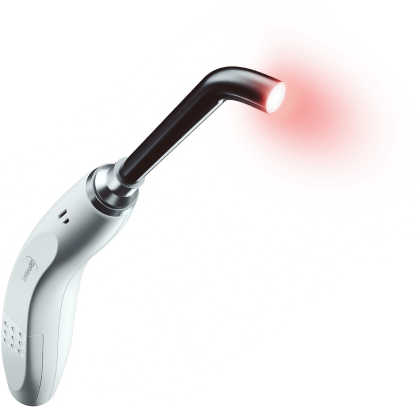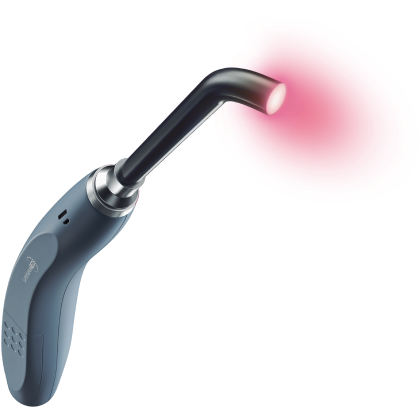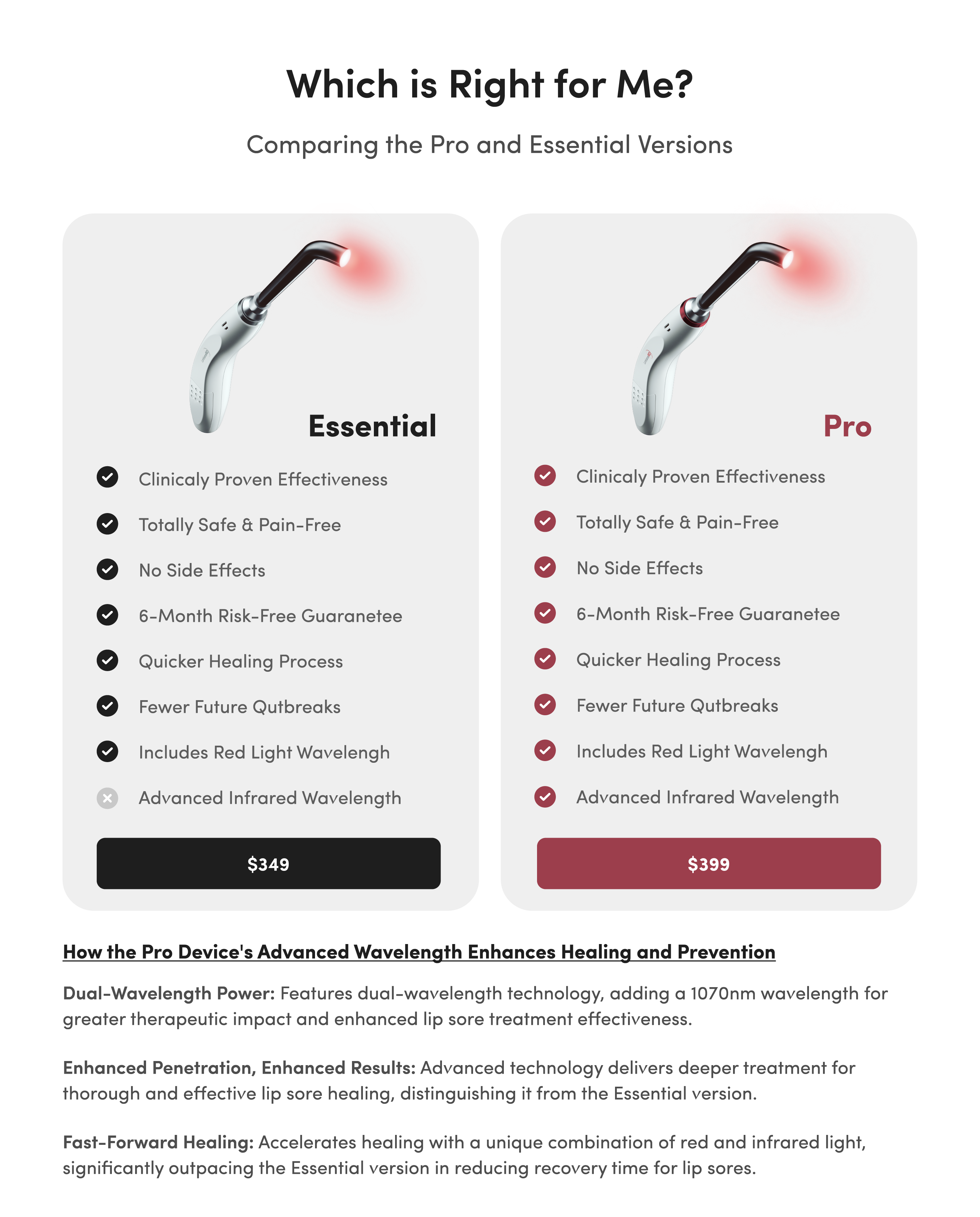Why Blue Light Therapy Can Help Heal Your Acne

In the United States alone, acne affects up to 50 million people each year.
And while many of that number are teenagers, acne affects many people well into adulthood. In fact, some studies suggest adult acne is actually increasing.
Skin care companies have produced creams, serums, peels, and washes to help in the fight against this common enemy, but they often come with harsh and unwanted side effects. Here, we’ll look at a more modern weapon for keeping acne at bay: blue light therapy.
What is blue light therapy for acne? To give some context, we’ll take a detailed look at acne and light therapy generally. Then we’ll examine what blue light therapy is, how it works, and the effect it has on acne.
What Is Acne?
Acne (also known as acne vulgaris) is a skin condition most often affecting areas of heightened oil production, such as the face, chest, and upper back. Excess oil combines with dead skin cells to clog pores and produce an ideal environment for acne-causing bacteria to multiply.
Adolescents often suffer from acne as they begin producing more skin oil, but many factors can lead to acne at any age, including:
- Hormone changes (due to pregnancy, puberty, etc.)
- Diet high in simple carbohydrates
- Inflammation
- Genetics
Even though acne isn’t a dangerous health concern, it can have a psychological impact, leading to:
- Decreased confidence
- Low self-esteem
- Social anxiety
- Depression
Prolonged or severe acne can also cause significant, lifelong scarring.
Acne Causes
No single factor alone causes acne. Genetics play a significant role, as do excess oil production, hormone changes, inflammation, and diet. Even certain medications can trigger breakouts.
One major contributor to acne is Cutibacterium acnes. This common microorganism normally lives on the skin’s surface, but when it enters pores clogged with oil and debris, it can proliferate to the point of causing irritated, swollen blemishes. Some strains of P. acnes appear to be more virulent than others, which may affect the severity and frequency of acne outbreaks.
Acne Symptoms
“Acne” serves as a catch-all phrase for breakouts of a variety of blemishes:
- Whiteheads — Oil and dead skin cells clog pores, becoming trapped under new skin growing over the surface.
- Blackheads — Oil and dead skin cells clog pores, but no skin grows over the top. The oxygen exposure causes the pores’ contents to darken in a process called oxidation.
- Papules — A type of pimple, papules are small, red, solid bumps created by pores clogged with oil, dead skin cells, and P. acnes. The bacteria cause inflammation inside the pore, making papules irritated and tender.
- Pustules — Pustules, another type of pimple, often develop from papules. Over time, the papule can fill with pus, creating a yellow-white tip at the surface. These pustules are often difficult for people to avoid popping.
- Acne nodules — Pimples can become so large and inflamed with P. acnes that they push painfully down into the skin. Acne nodules appear as firm, tender lumps beneath the skin and do not contain pus.
- Acne cysts — Acne cysts also develop deep under the skin from an infected clogged pore, but these contain pus. Cystic acne is considered the most severe form of acne.
Acne Complications
The pimples themselves may heal, but they can leave hyperpigmented (dark) or hypopigmented (light) spots on the skin that take significant time to return to normal. Papules, pustules, nodules, and cysts can also all result in permanent scarring, leaving pitting, depressions, or raised bumps on the skin’s surface. Consequently, self-consciousness can be another kind of acne complication, even after breakouts stop.
Acne Treatments
A visit to any drugstore or pharmacy will reveal entire aisles full of topical skincare products, many intended for the sole purpose of preventing, treating, and healing acne. Dermatologists can also prescribe stronger oral and topical medications to treat more stubborn acne. The major drawback of all these treatments is their side effects, which can be harsh and unpleasant.
However, research shows that an alternative treatment — blue light therapy — can work just as well, if not better, to treat acne outbreaks. And this treatment is consistently side-effect free.
Blue Light Therapy
You’ve probably heard about the negative effects of the blue light emitted from televisions, computers, and smartphones, so why would you want to expose yourself to more than necessary? Much of the concern over blue light involves its effects on sleep and the potential for eye strain from staring at screens for too long.
When used intentionally and in appropriate doses over a controlled time, however, medically approved, FDA-cleared blue light devices can actually confer healing benefits.
Blue light therapy harnesses short wavelengths from one end of the visible light spectrum, between 450 and 495 nanometers (nm). These short wavelengths don’t penetrate very deeply into the skin, but they’re very effective at the skin’s surface. Lasers or light-emitting diodes (LEDs) shine the light over a targeted area of the skin during treatments.
There are two major reasons why blue light therapy for acne is so effective: disinfection and oil reduction.
How Does Blue Light Therapy Help Acne?
Blue light therapy is antibacterial and antimicrobial, meaning that it acts effectively against a wide array of microbes, which include algae, bacteria, fungus, mildew, mold, and viruses. Because one of the main contributors to acne, especially severe acne, is P. acnes, it makes sense that the antibacterial properties of blue light make it an effective treatment.
Blue light has a remarkable ability to kill bacteria through a process called photoexcitation, which excites molecules and disrupts processes within the bacteria. By reducing bacteria like P. acnes, blue light therapy reduces acne inflammation and infection.
Blue light also limits the growth and overproduction of oil-producing cells (sebocytes) in the skin, helping to prevent clogged pores.
Studies indicate blue light therapy for acne is both safe and effective. It may even achieve better results than conventional treatments, such as isotretinoin, without the unwanted side effects.
Dermatologists sometimes combine blue light therapy with a light-sensitizing prescription drug in a treatment called photodynamic therapy. This combination treatment is generally safe, but the downside is a return of side effects, including bruising, peeling, redness, swelling, or tenderness of the skin.

Why Blue and Red Light Therapy Work Best Together
Although blue light therapy for acne is highly effective on its own, it works best when paired with red light therapy. Many studies show great benefit to combining red light therapy with blue light therapy for acne treatment and prevention.
Red light therapy assists blue light in reducing the skin’s oil production to avoid breakouts. It also calms inflammation and encourages the healing of existing acne, especially irritated pimples, nodules, and cysts.
In just a few minutes per day, red and blue light therapy can reduce the risk of pore blockages, eliminate acne-causing bacteria, and renew the skin from a cellular level.
Luminance RED recently developed an FDA-cleared acne treatment device that uses both blue and red light to fight blemishes on the face. If you’re struggling with acne and want to learn more, visit our in-depth post about light therapy for acne.














